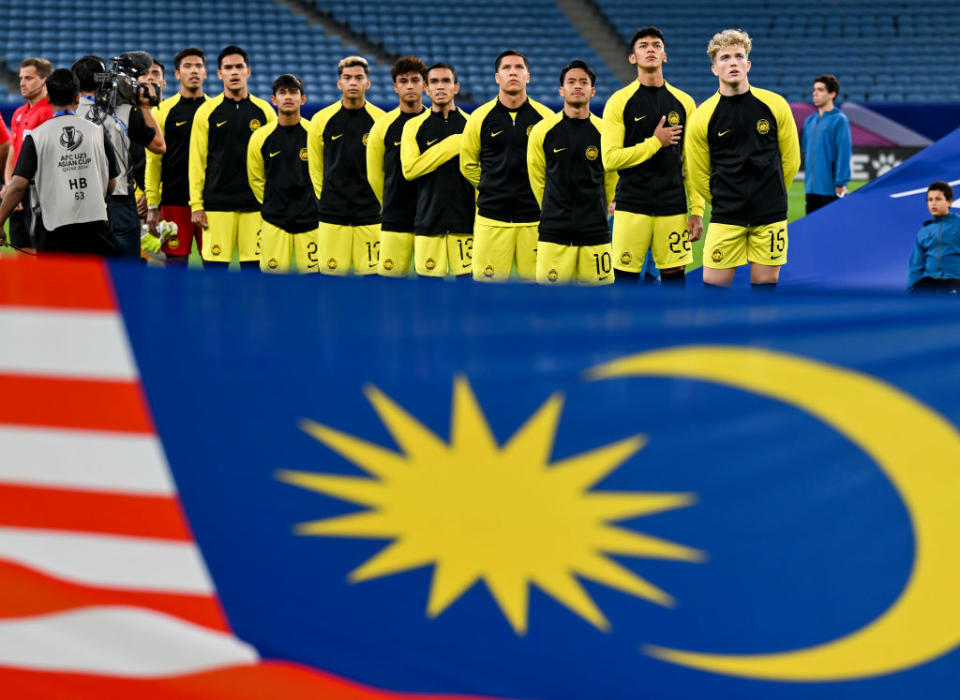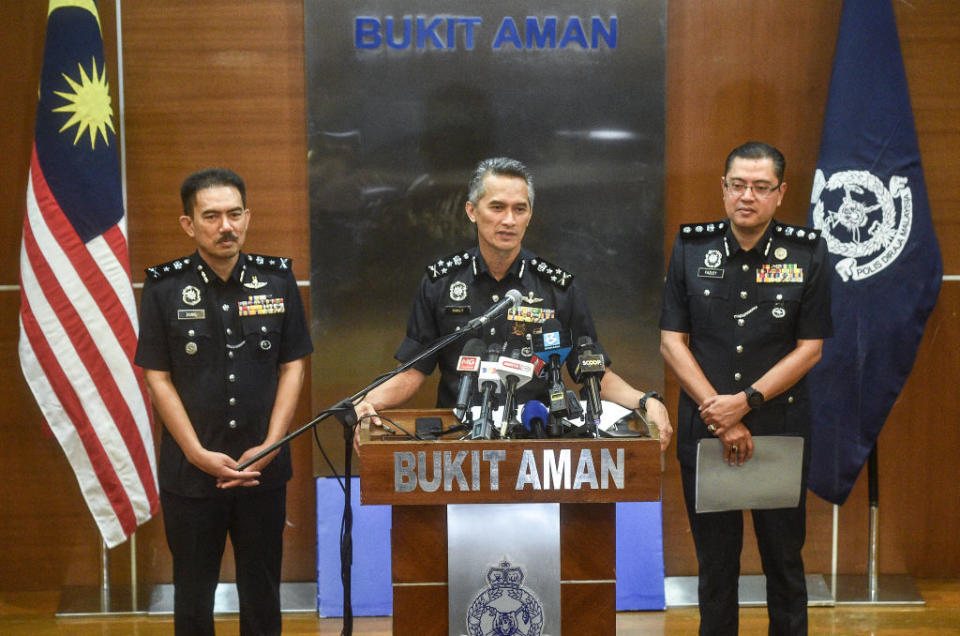What to Know About Malaysian Soccer Player Attacks

Malaysian youth national team players stand for the anthem before a match at the AFC U23 Asian Cup in Doha, Qatar, on April 23, 2024. <br> Credit - Noushad Thekkayil—NurPhoto/Getty Images
Malaysia’s domestic soccer league was meant to kick off on Friday with a match between its top two teams that serves both as the Malaysia Charity Shield and the league curtain-raiser.
But after three players were targeted in the last week—one left hospitalized after an acid attack, another in stitches from a violent home robbery, and a third not physically harmed but traumatized after a couple motorcyclists smashed his car with a hammer while he was inside—one of the teams has pulled out, citing criminal incidents and threats.
“Given the uncertainties surrounding the club at present, Selangor FC would like to emphasize that the safety of the team is of utmost importance and we take all forms of violence and threats seriously,” the club said in a statement on Wednesday. The decision came after the club requested, apparently unsuccessfully, that the Football Association of Malaysia and Malaysian Football League postpone the Friday match. Organizers said that they had imposed tighter security, and the rest of the league games this weekend are expected to go on as planned.
Selangor FC’s decision to pull out of the Friday match was supported by Selangor ruler Sultan Sharafuddin Idris Shah, who said via a statement from his royal office that he was disappointed by the Malaysia Football League’s rejection of Selangor FC’s request to postpone the match, emphasizing that “the priority now is the life and safety of players and not the winning of trophies.”
Selangor’s opponent, Johor Darul Ta'zim (JDT), which was declared the winner of the match by forfeiture, said in a statement that it was “disappointed” by Selangor FC’s withdrawal and urged it to reconsider, citing concern that the move “could set a precedent of teams pulling out because they feel unsafe.”
Unprecedented attacks
It remains unclear what the motivations behind each of the attacks were or if they were related.
The first incident occurred last Thursday, when Akhyar Rashid, a 25-year-old Malaysian men’s national team player and JDT forward currently on loan to Terengganu FC, suffered minor injuries to his head and legs when his condo in the eastern state of Terengganu was robbed.
The second came on Sunday, when Selangor FC’s Faisal Halim, a 26-year-old winger who also plays for the Malaysia men’s national team and scored the goal of the tournament in the 2023 Asian Cup, was splashed with sulfuric acid at a shopping mall outside the capital Kuala Lumpur. He remains in intensive care with fourth-degree burns, has undergone two surgeries, and will receive a skin graft this week. He’s expected to be out of action for at least six months, as his movement and speech have been affected by the attack. A suspect in his 20s was arrested.
Kim Pan Gon berkemungkinan terpaksa mencari pengganti slot Faisal Halim dan Akhyar Rashid bagi pusingan kelayakan Piala Dunia 2026 / Piala Asia 2027. #FAM #HarimauMalaya #NadiArena #AstroArena pic.twitter.com/Mz1mG1GCxv
— ASTRO ARENA (@ASTROARENA) May 6, 2024
A third incident was reported on Wednesday, when another JDT and national team player, 36-year-old Safiq Rahim, shared on social media that he was threatened late Tuesday night after he left the JDT training grounds in Johor by two assailants who intercepted his car and battered his rear windshield before leaving without harming him. Safiq also shared that he filed a local police report, and the police confirmed to local media that they are investigating the incident.
“I never thought that I would be attacked near the JDT training centre,” Safiq said on social media. “We have to be more careful in such times.”
Hamidin Mohamad Amin, the president of the Football Association of Malaysia, told AFP that attacks on players like the ones over the last week have “never happened in the history of Malaysian football.” He also announced plans to tighten security at the national team’s training sites and advised high-profile athletes to hire personal bodyguards.
Fallout and investigation
Police told reporters that it was too early to tell if the attack on Safiq is related to the previous ones on Faisal and Akhyar and told the public to refrain from speculating.

Still, rumors surrounding the closely timed incidents are rife, fuelled by, according to observers, reticence and opacity from authorities. Some believe that the attacks come from bookies trying to fix matches, while other theories blame fans from rival teams.
“Everything is madness at the moment. Nobody knows what to do and nobody knows what is going to happen next,” an unnamed former international player told the Guardian of the recent attacks.
JDT warned its players on Wednesday to pay more attention to their surroundings and social media activity.
Selangor’s Sultan Sharafuddin also said in another statement that he hoped police investigation would “cover the possibility of involving group activities with malicious intentions or public evasion such as football thugs or hooliganism.”
Malaysia has long grappled with hooliganism in its soccer scene, dominated by hardcore fans loyal to the different state clubs. In November, police arrested over 20 people in what they described as a premeditated brawl between supporters of Selangor and Perak.
The recent attacks on players have also sparked concern from lawmakers. “No violence in sports!” Youth and Sports Minister Hannah Yeoh posted on X in the wake of the acid attack on Faisal, as she urged the police to take action. Karim Hamzah, the youth and sports minister for the state of Sarawak, told reporters on Wednesday that he hoped “authorities will go right to the roots of the problem.”
“If it involves bookies or (betting) syndicates,” Karim said, “it needs to be addressed properly.”
Contact us at letters@time.com.

